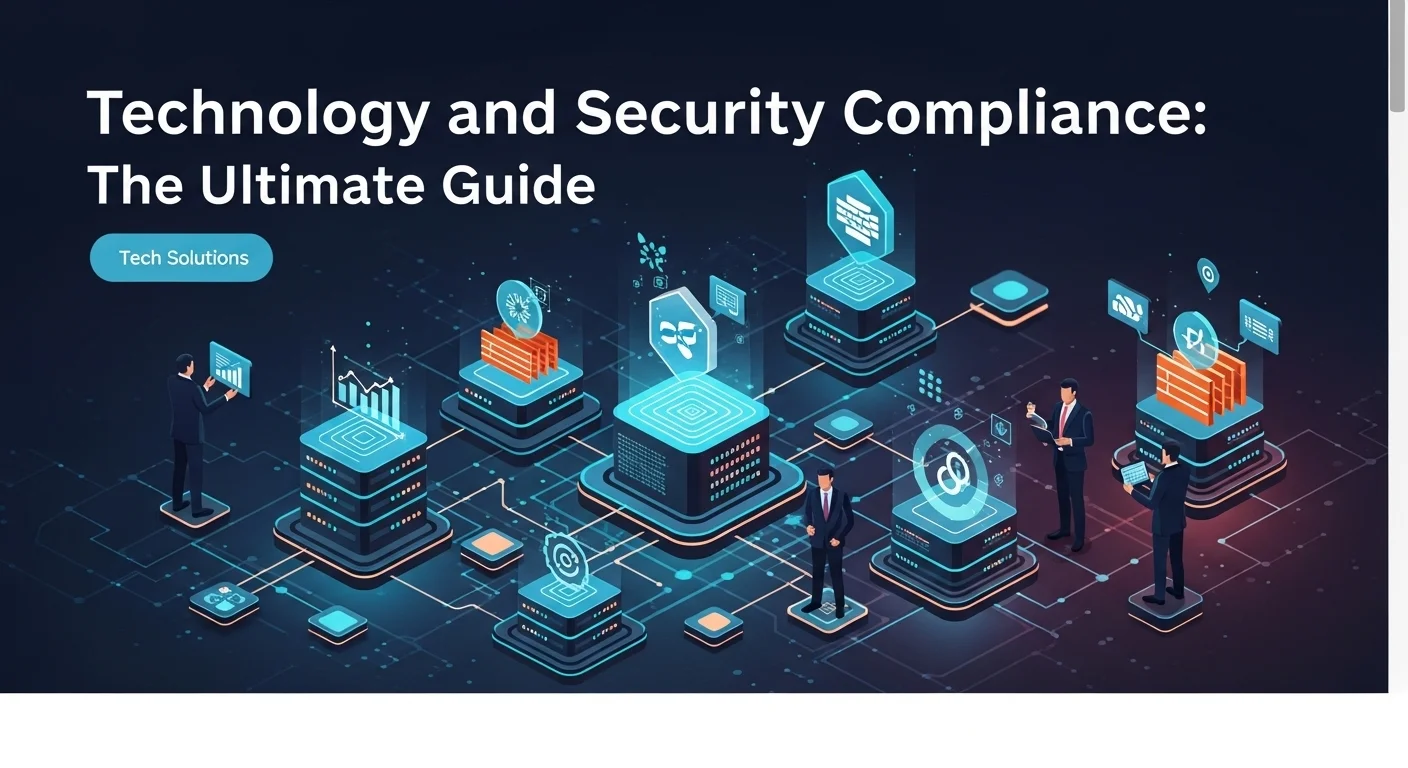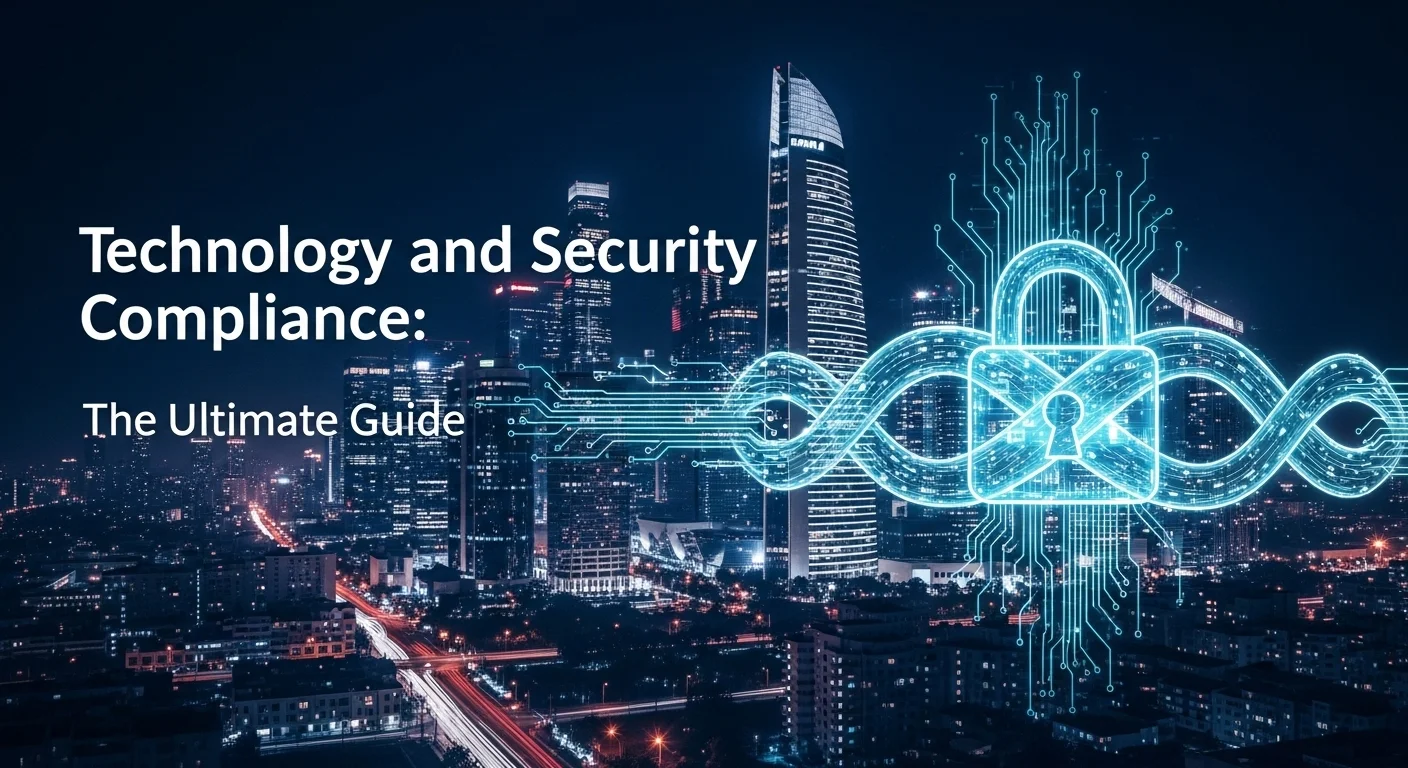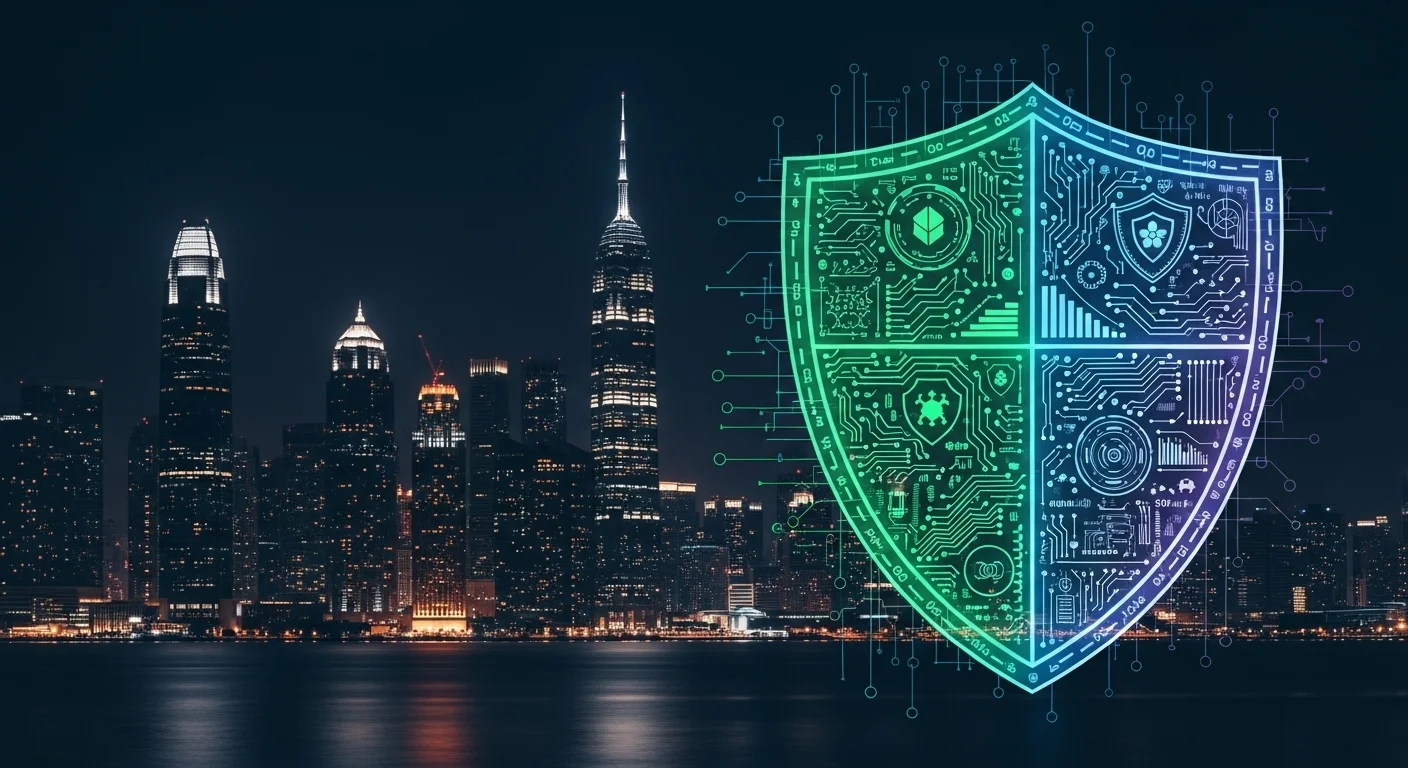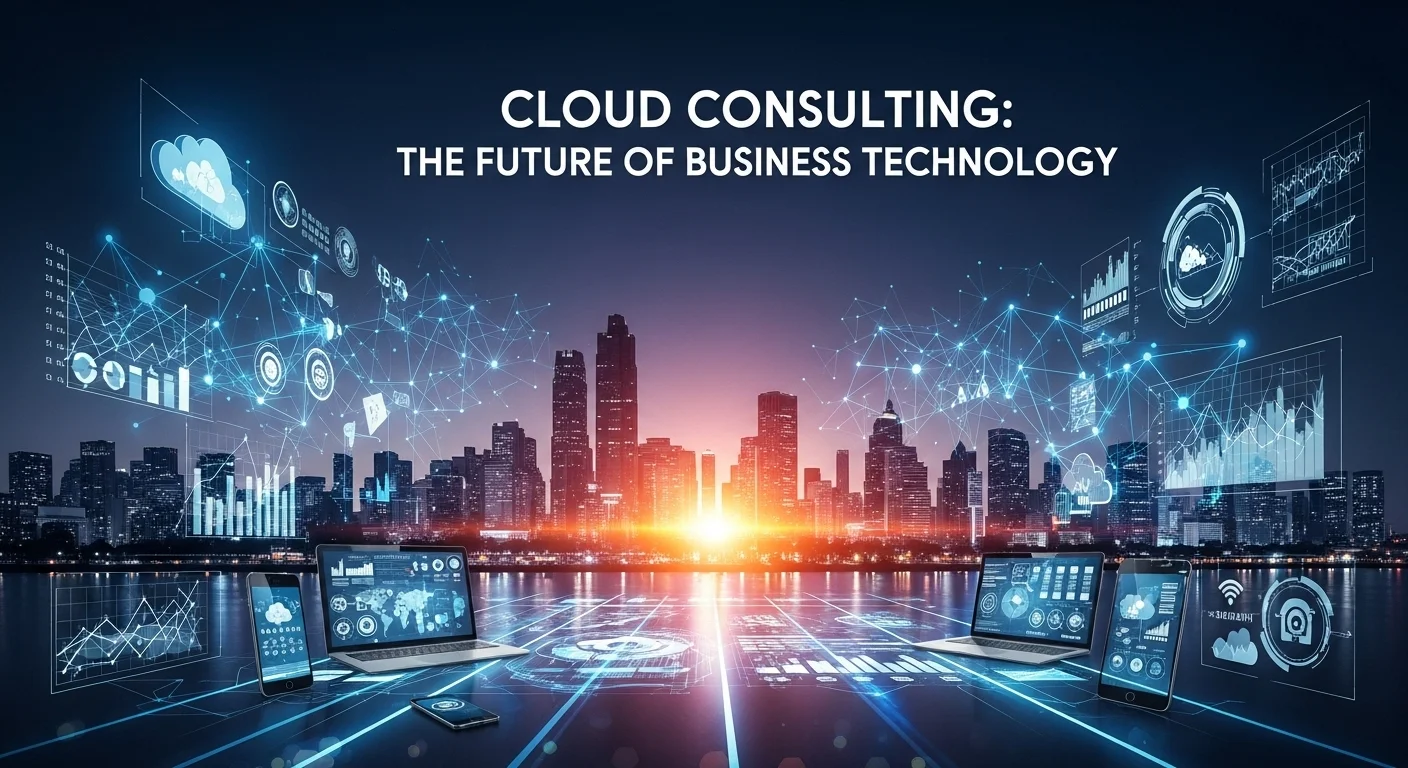Navigating Security Compliance: A Real-World Guide for Your Tech Business

Executive Summary
In my years working in cybersecurity, I've seen countless businesses treat security compliance like a dreaded chore—a bureaucratic hoop to jump through. But I've also seen the incredible power of shifting that mindset. True security compliance isn't just about avoiding fines; it's a cornerstone of a smart business strategy. It's the difference between being prepared and being a headline. This guide is my attempt to demystify the process for you. We'll cut through the jargon and focus on what really matters: understanding that security is *how* you protect your data, while compliance is the framework that *proves* you're doing it right. We'll explore essential standards like GDPR, HIPAA, and PCI DSS, not as abstract rules, but as roadmaps to building customer trust and a rock-solid defense. My goal is to show you how achieving compliance isn't just a regulatory burden, but one of the best investments you can make in your company's future.
Table of Contents
Table of Contents
What is Security Compliance and why is it important?
Understanding the Core Components
Cyber Security Compliance
Information Security Compliance
Network Security Compliance
The Role of Audits and Frameworks
Cyber Security Audit and Compliance
The Cyber Security Compliance List
Complete Guide to Security Compliance
Building a Security Compliance Program
Advanced Tips and Strategies
Final Actionable Checklist
What is Security Compliance and why is it important in Technology?
In a world where data is the lifeblood of every business, protecting it isn't just good practice—it's a requirement. This is the heart of Security Compliance. Simply put, it's the formal process of proving that your organization follows the laws, regulations, and industry standards for protecting information. I often see people use 'security' and 'compliance' interchangeably, but they're two sides of the same coin. Think of it this way: security is the alarm system, the strong locks, and the guard dog you have to protect your house. Compliance is the official certificate from the city inspector confirming your house meets all the safety codes. It's the verifiable proof that you've done your due diligence. You can have great security without being compliant, but you can't truly be compliant without having good security in place.
The importance of getting this right is immense. First, there are the cold, hard numbers. Ignoring regulations like Europe's GDPR or the healthcare-focused HIPAA in the U.S. can lead to fines that can cripple a business. I've seen firsthand how the cost of a data breach skyrockets for companies that weren't compliant. Second, and just as important, is trust. Your customers and partners are savvier than ever about data privacy. Showing them you're certified with a rigorous standard like ISO 27001 or SOC 2 is a powerful way to say, "We take protecting your data seriously." It can become a real competitive advantage. Finally, these compliance frameworks aren't just a list of rules; they are a fantastic roadmap. They give you a structured path to systematically batten down the hatches, improve your defenses, and move from a reactive, 'fire-fighting' security stance to a proactive and resilient one.
Understanding the Core Components
To really get a handle on compliance, it helps to break it down into its key areas. They all work together to create a solid, defensible position.
1. Cyber Security Compliance
This is the big-picture view. It’s about following the standards designed to protect all your digital assets—networks, systems, applications—from cyberattacks. Cyber security compliance means putting a wide range of controls in place to build a tough, resilient digital environment. It’s about following established playbooks that guide everything from password rules to how you respond when an attack happens. The goal here is to ensure your organization has taken every necessary step to align its security measures with legal and industry mandates.
2. Information Security Compliance
Here, we zoom in on the data itself, no matter where it lives or what format it's in. Information security compliance is built on three pillars I always tell my clients to remember: confidentiality (only the right people can see it), integrity (the data is accurate and trustworthy), and availability (you can get to it when you need it). This is where things like data encryption, strict access controls, and data classification come into play. Regulations like GDPR are laser-focused on this, as their main job is to protect personal data. When you achieve this, you're proving you have the safeguards to prevent data from being leaked, stolen, or tampered with.
3. Network Security Compliance
This area focuses on the digital highways and pathways connecting all your systems—the network itself. Network security compliance means sticking to standards for securing your routers, firewalls, and the flow of data. Frameworks like the Payment Card Industry Data Security Standard (PCI DSS) are famously strict about this. They demand things like a secure firewall, segmenting your network to isolate sensitive data, and encrypting any data sent over public networks. This is where you get into the nuts and bolts of vulnerability scanning, intrusion detection systems, and access control lists. Getting network security right ensures the digital doors and hallways of your organization are heavily guarded.
The Role of Audits and Frameworks
Achieving compliance isn't something you can just declare. You have to prove it, and that’s where audits and frameworks are essential.
Cyber Security Audit and Compliance
A cyber security audit is like a full-body health checkup for your security program. It's a systematic, independent review of your defenses against a specific set of rules. You can do internal audits to get ready, but the one that really counts is the external audit from a certified third party. The auditor will go through your policies, interview your team, inspect your systems, and test your controls to find any gaps. The final audit report is your roadmap for fixing things. I always stress to my clients that audits aren't a one-time event. They are part of a continuous cycle of improvement, keeping you sharp as threats and rules evolve.
The Cyber Security Compliance List
For any business starting this journey, a cyber security compliance list is your starting point. It's basically a menu of the regulations and standards that might apply to you based on your industry, location, and data. A typical list includes:
- GDPR (General Data Protection Regulation): A must for anyone handling the personal data of EU citizens.
- HIPAA (Health Insurance Portability and Accountability Act): Non-negotiable for U.S. healthcare organizations and their partners who handle patient data.
- PCI DSS (Payment Card Industry Data Security Standard): Required if you handle credit card information in any way.
- SOX (Sarbanes-Oxley Act): For U.S. public companies, ensuring the integrity of financial reporting systems.
- ISO/IEC 27001: The global gold standard for an Information Security Management System (ISMS). It's a comprehensive framework that is highly respected worldwide.
- NIST Cybersecurity Framework (CSF): A voluntary but hugely influential set of guidelines from the U.S. government for improving cybersecurity.
- SOC 2 (Service Organization Control 2): An audit that's critical for service providers, especially in the cloud. It proves you securely manage client data based on five 'trust service criteria': security, availability, processing integrity, confidentiality, and privacy.
Understanding this list is the first step. From there, you can dive into the detailed work of implementing the right controls across your organization. In today's world, this comprehensive approach isn't optional—it's the foundation of a trustworthy and sustainable business.

Complete guide to Security Compliance in Technology and Business Solutions
Alright, let's roll up our sleeves. Knowing the 'what' and 'why' of compliance is one thing; actually building a program that works is another. This is the practical guide to turning those regulatory checklists into real-world actions. Whether you're a business leader, an IT pro, or a compliance officer, this is about making compliance a part of your company's DNA, transforming it from a headache into a genuine strategic asset.
Building a Security Compliance Program from the Ground Up
A successful compliance program is a marathon, not a sprint. It’s a step-by-step process that starts with understanding your landscape and evolves into a cycle of continuous improvement. Here’s how I walk my clients through it.
Step 1: Discovery and Scoping
First things first: you can't protect what you don't know you have, and you can't comply with rules you're not aware of. Your first job is to figure out which regulations apply to you. Are you in healthcare? HIPAA is your world. Do you process credit cards? PCI DSS is non-negotiable. This is where that cyber security compliance list is your best friend. A common mistake I see here is trying to boil the ocean. Once you know the 'what,' you need to define the 'where.' Does the regulation apply to your whole company or just one part? For PCI DSS, for example, your scope is usually just the systems that touch cardholder data. Defining a clear scope from the start saves a massive amount of time and resources.
Step 2: Risk Assessment and Gap Analysis
With your scope defined, it's time to play detective. A risk assessment involves identifying all the things that could go wrong (threats like ransomware or an insider leak) and the weak spots they could exploit (vulnerabilities like unpatched software). After you understand your risks, you perform a gap analysis. This is an honest look in the mirror, comparing your current security controls against the specific requirements of the framework you're aiming for. Think of it as a pre-audit, an internal cyber security audit and compliance check to find every single gap you need to fix.
Step 3: Remediation and Control Implementation
This is where the real work begins. You take your list of gaps and you start closing them. This is a mix of technical, administrative, and even physical tasks. For instance:
- Technical Controls: This is the tech stuff—setting up firewalls, encrypting your data, rolling out multi-factor authentication (MFA), and using a SIEM system to watch for trouble. These are the bedrock of information security compliance and network security compliance.
- Administrative Controls: These are the people-focused controls—running security awareness training, creating an incident response plan so you know what to do in a crisis, and conducting background checks for key personnel.
- Physical Controls: Don't forget the physical world! This means locking down your server rooms, using surveillance cameras, and securely shredding documents or wiping old hard drives.
The key here is to map every single control you implement back to a specific requirement in the framework. It's all about showing your work.
Step 4: Documentation and Evidence Collection
Let me be blunt: if it isn't documented, it didn't happen. Auditors live and die by evidence. As you're fixing gaps and implementing controls, you have to document everything—every policy, every procedure, every system configuration. This used to be a nightmare of spreadsheets, but modern Governance, Risk, and Compliance (GRC) platforms are a lifesaver. They act as a central library for all your evidence, automatically linking controls to requirements and making the final audit process infinitely smoother.
Step 5: Continuous Monitoring and Auditing
You've crossed the finish line and gotten certified—congratulations! But the race isn't over. The threat landscape and regulations are always changing. Continuous monitoring means keeping a constant watch over your environment to make sure you stay compliant. Automated tools like SIEMs and vulnerability scanners are perfect for this, alerting you in real-time if something drifts out of line. Combined with regular internal audits, this ongoing vigilance is what separates the companies that are truly secure from those who just have a certificate on the wall.
Leveraging Technology for Compliance Automation
Trying to manage all of this manually is a recipe for burnout and mistakes. Technology is your best ally in making compliance manageable and sustainable.
Governance, Risk, and Compliance (GRC) Platforms
Think of a GRC tool (like Hyperproof or Sprinto) as the project manager for your entire compliance program. They come loaded with frameworks and automatically map your controls across them. For example, that MFA control you set up? It might help satisfy requirements for SOC 2, ISO 27001, and PCI DSS all at once. These platforms automate the tedious evidence collection and give you a real-time dashboard showing exactly where you stand.
Security Information and Event Management (SIEM)
A SIEM is your 24/7 security guard. It pulls in log data from everywhere—servers, firewalls, applications—and uses smart rules and AI to spot suspicious activity. It can automatically detect things like a brute-force login attempt or an employee accessing files they shouldn't. This isn't just nice to have; it's a mandatory capability for meeting the incident detection requirements of most modern compliance standards.
Data Discovery and Classification Tools
You can't protect what you don't know you have. These tools are like bloodhounds for your sensitive data. They automatically scan all your storage, find personal information (PII), health records (PHI), or financial data, and tag it. This is a foundational step for rules like GDPR and HIPAA because it allows you to apply the right level of protection to the right data, ensuring your efforts are both efficient and effective.
Choosing the Right Frameworks: A Comparative Look
While the cyber security compliance list is long, most organizations will zero in on a few key frameworks. Here’s a quick cheat sheet:
- ISO 27001: This is the global gold standard for a security management system. It’s flexible and risk-based, making it a favorite for B2B companies that need to prove their security maturity to large enterprise clients.
- SOC 2: Hugely popular with SaaS and cloud companies. It's not a certification, but an attestation report from a CPA that provides a high level of assurance to your customers that you're handling their data responsibly.
- NIST Cybersecurity Framework (CSF): Though voluntary for most, the NIST CSF is incredibly well-respected. It organizes security into five simple functions: Identify, Protect, Detect, Respond, and Recover. It’s an excellent starting point for building a solid program.
- PCI DSS: If you touch credit cards, this one is not optional. It's highly specific and rigid, covering everything from firewall rules to physical security, making it one of the toughest standards out there.
By following this guide, you can take the mystery out of compliance. It's a journey, for sure, but the destination—better security, deeper customer trust, and a more resilient business—is worth every step.

Tips and strategies for Security Compliance to improve your Technology experience
Getting that compliance certificate is a huge win, but it's the beginning of the journey, not the end. The real goal, the one that provides lasting value, is to weave security and compliance into the very fabric of your company culture. A certificate on the wall is useless if your team's daily habits are sloppy. This section is about moving beyond the checklist to build a sustainable culture of security that actually makes your business stronger and more agile.
Fostering a Culture of Security and Compliance
In my experience, the strongest security programs aren't built on technology alone; they're built on people. When every single employee sees themselves as part of the defense, you've won half the battle.
1. Leadership Commitment and Tone from the Top
This has to start in the C-suite. A culture of compliance dies on the vine if leadership just signs the checks but doesn't live the values. When executives talk about security in company meetings, participate in the training, and hold their own teams accountable, it sends an unmistakable message: this is a core priority for our business. That 'tone from the top' is contagious and sets the standard for everyone else.
2. Comprehensive and Continuous Employee Training
Your employees are your biggest asset and potentially your biggest risk. With the right training, they become your human firewall. Security awareness can't be a one-and-done onboarding task. The best programs are continuous, using engaging methods like phishing simulations and short, relevant updates on new threats. The training must also be tailored. Your developers need to know about secure coding, while your finance team needs to be experts at spotting fraudulent payment requests. This is how you make information security compliance a living, breathing part of everyone's job.
3. Establish a Security Champions Program
This is one of my favorite strategies. Find the people in different departments who are genuinely interested in security, give them some extra training, and empower them to be the 'security go-to' for their team. These champions can translate dense security policies into practical advice, answer questions, and build momentum from the ground up. It’s a fantastic way to scale your security team’s reach and make it feel less like a top-down mandate.
Advanced Technical Strategies for Proactive Compliance
Once you have the basics down, you can level up with more sophisticated strategies that build compliance directly into your tech stack.
1. Compliance-as-Code
In modern tech environments, we build our infrastructure with code. So why not our compliance? Compliance-as-Code means defining your security rules in a programmable way. For example, you can write a policy that automatically scans every new cloud server before it's launched to ensure it meets your security baseline. It's integrated right into your development pipeline, blocking non-compliant changes before they can ever become a problem. This proactive approach to cyber security compliance is infinitely better than finding a mistake months later in an audit.
2. Zero Trust Architecture (ZTA)
The old 'castle-and-moat' model of security is dead. A Zero Trust Architecture works on a simple, powerful principle: 'never trust, always verify.' It assumes a threat could already be inside your network, so it demands strict verification for every person and device trying to access anything, no matter where they are. Implementing Zero Trust with tools like MFA and micro-segmentation naturally satisfies a huge number of compliance requirements, especially the core principle of 'least privilege' that you'll find in every cyber security compliance list.
3. AI-Powered Security and Compliance Tools
Artificial Intelligence is a game-changer for compliance. AI-powered tools can sift through mountains of data to spot subtle threats that a human would miss. They can learn what 'normal' behavior looks like on your network and flag anomalies, like an admin account suddenly trying to download massive amounts of data at 3 AM. For your cyber security audit and compliance check, AI can automate the painful process of collecting evidence and testing controls, freeing up your team for more strategic work.
Essential Business Tools and Resources
You don't have to go it alone. Leveraging the right tools and expert resources is key to success.
Top Compliance Management Platforms:
- Vanta/Drata/Secureframe: These are incredibly popular with startups and tech companies. They automate and streamline the process of getting 'audit-ready' for certifications like SOC 2 and ISO 27001.
- Hyperproof: A great all-around platform for managing multiple compliance frameworks in one place, automating evidence collection, and giving you real-time visibility.
- AuditBoard: An enterprise-level solution that's perfect for larger, more complex organizations needing to connect their risk, audit, and compliance functions.
Key External Resources:
- NIST (National Institute of Standards and Technology): An absolute treasure trove of free resources, including the Cybersecurity Framework (CSF) which is the foundation of countless security programs.
- ISACA (Information Systems Audit and Control Association): A global association offering key certifications (like CISA) and frameworks (like COBIT) on IT governance.
- SANS Institute: A top-tier provider of in-depth cybersecurity training and certifications.
- External Link Example: For up-to-the-minute insights on cloud security, the AWS Security Blog is an invaluable resource, offering best practices from the world's leading cloud provider.
Final Actionable Checklist for Your Technology Experience
To wrap it all up, here is a final, actionable cyber security compliance list to help you build a more secure and resilient business:
- Know Your Rules: Figure out exactly which regulations (GDPR, HIPAA) and standards (ISO 27001, PCI DSS) apply to your business. Don't guess.
- Assess Your Risks: Be proactive. Identify what could go wrong and where you're vulnerable before an attacker does it for you.
- Nail the Basics: Enforce MFA everywhere. Encrypt your sensitive data. Keep regular backups. Patch your software. These foundational controls are non-negotiable.
- Document Everything: Create clear security policies, procedures, and a crisis plan. If an auditor can't see it on paper, it doesn't exist.
- Train Your People: Your team is your first and last line of defense. Invest in continuous security awareness training.
- Automate to Accelerate: Use modern tools to automate monitoring, evidence collection, and threat detection. It’s the only way to make cyber security compliance sustainable.
- Never Stop Improving: Treat compliance as a continuous cycle, not a one-time project. Regularly test, review, and update your defenses to stay ahead of the game.
By making these strategies part of your business, you'll transform compliance from a burden into a powerful discipline that builds trust, strengthens your defenses, and gives you a real competitive edge.
Expert Reviews & Testimonials
Sarah Johnson, Business Owner ⭐⭐⭐
As a small business owner, I found this guide helpful. It laid out the big picture of compliance. I would have loved a few more real-world examples for a company my size, but it's a great starting point.
Mike Chen, IT Consultant ⭐⭐⭐⭐
Solid overview of security compliance. As an IT consultant, I appreciated the breakdown of the different frameworks. It clarified the distinctions between ISO 27001 and SOC 2 for me. A good resource to share with clients.
Emma Davis, Tech Expert ⭐⭐⭐⭐⭐
Fantastic and thorough article! I'm specializing in cybersecurity, and this piece connected all the dots perfectly. The explanation of how GRC tools fit into the audit process was incredibly clear. A must-read.



